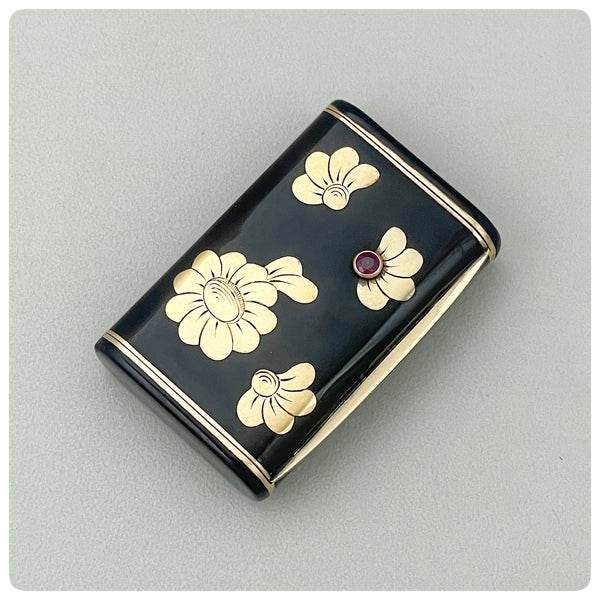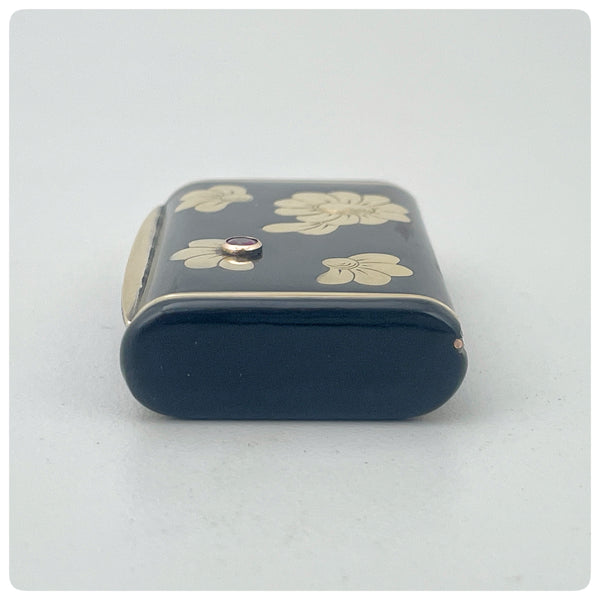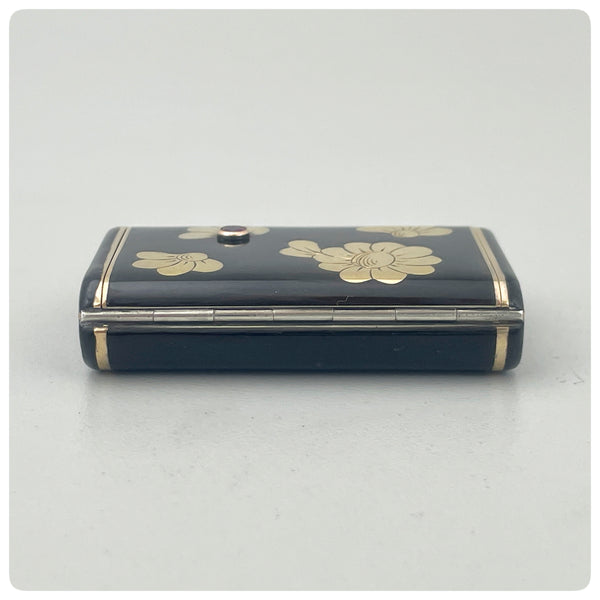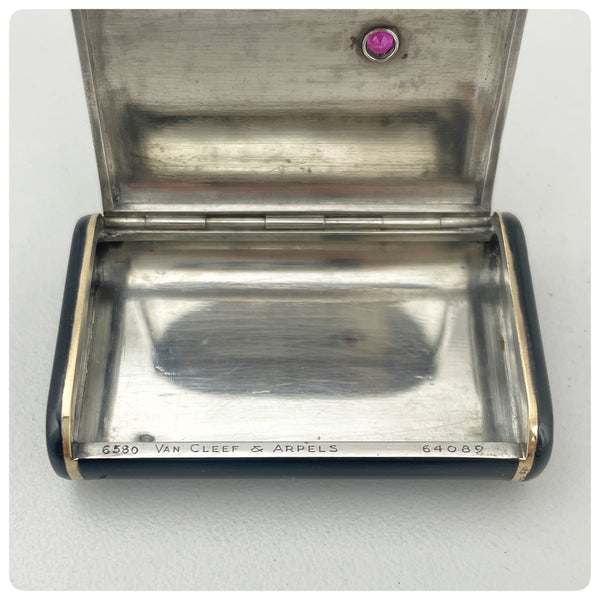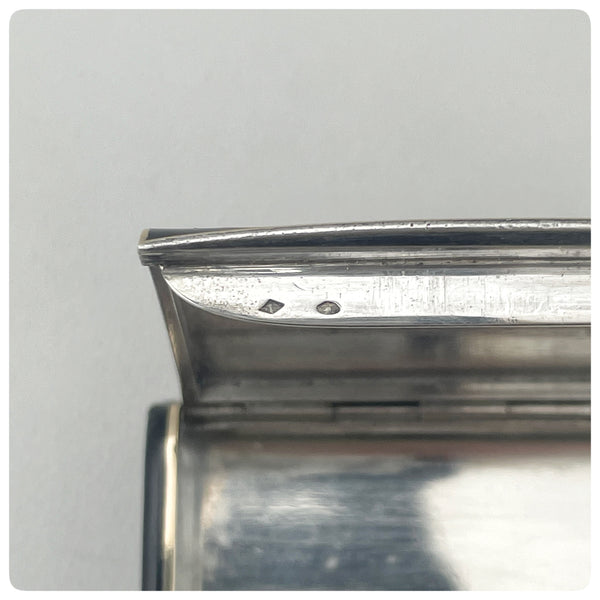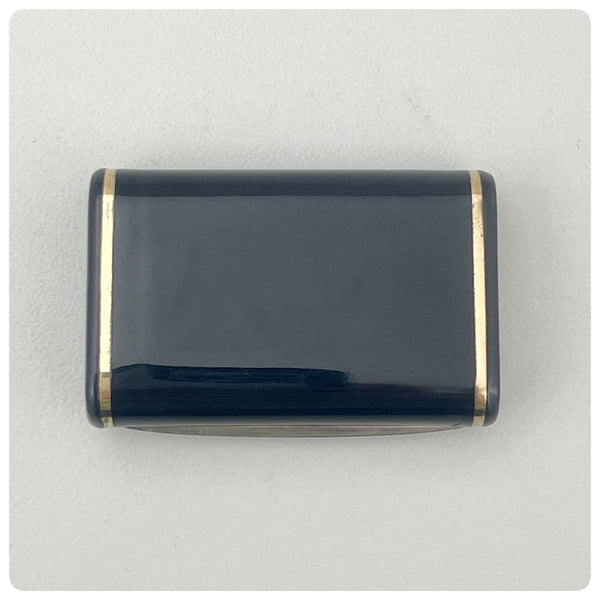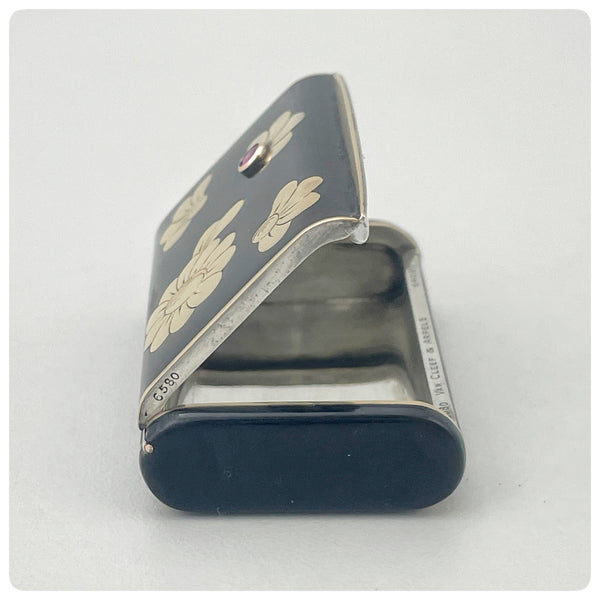Vermeil, Silver, Black Enamel and Ruby Pill Box, Van Cleef & Arpels, Paris, Circa 1930
SOLD
Dutchman Alfred Van Cleef and his father-in-law, Salomon Arpels, founded the renown firm in 1896 that still thrives today. Their design innovation and technical ingenuity was recognized with the grand prize at the International Exposition of Modern Industrial and Decorative Arts in 1925. A year later, Alfred's daughter Renee Puissant assumed the company's artistic direction.
In December 1933, Van Cleef & Arpels received a French patent (number 764966) for a proprietary gem setting style that would secure their preeminence as one of the greatest jewelry houses of all time. Called Serti Mysterieux or "Mystery Setting", the setting features prongs that are invisible. Gold rails less than two-tenths of a millimeter thick hold each stone. This also helped them gain fashion icons Grace Kelly, Jacqueline Kennedy Onassis, Diana, Princess of Wales, Ava Gardner, Elizabeth Taylor, Eva Peron, and the Duchess of Windsor as steady clients. Queen Nazli of Egypt commissioned Van Cleef & Arpels to craft her crown in the 1930s. In 1966, the firm secured the commission for Empress Farah Pahlavi's coronation crown.
#6580, #64089
3/8" height, 1 1/4" length, 1 7/8" width







